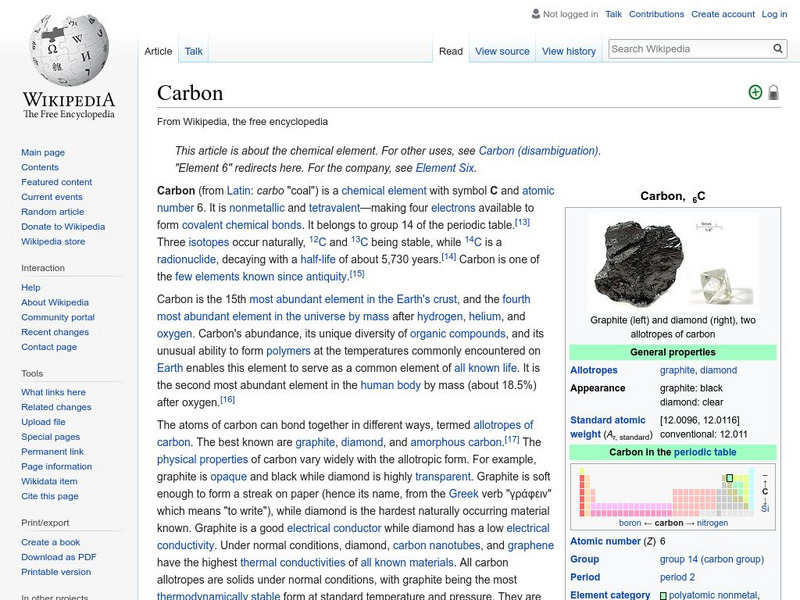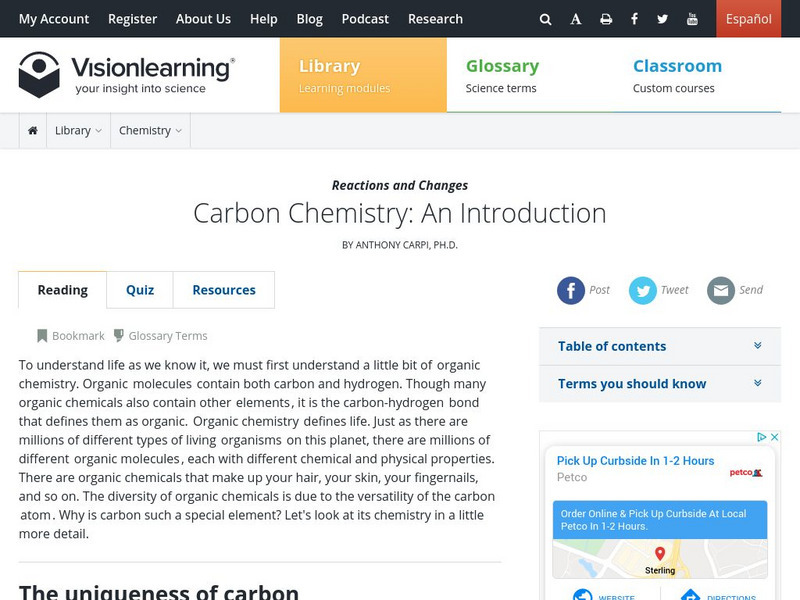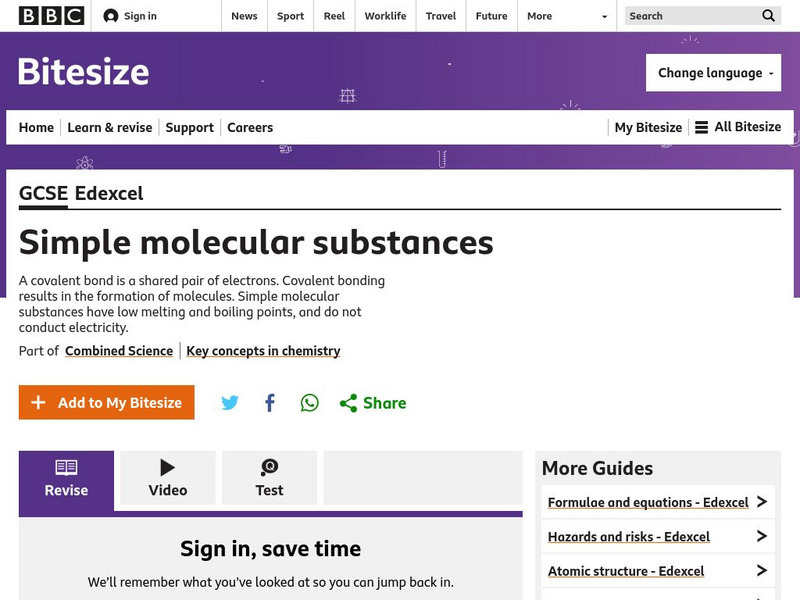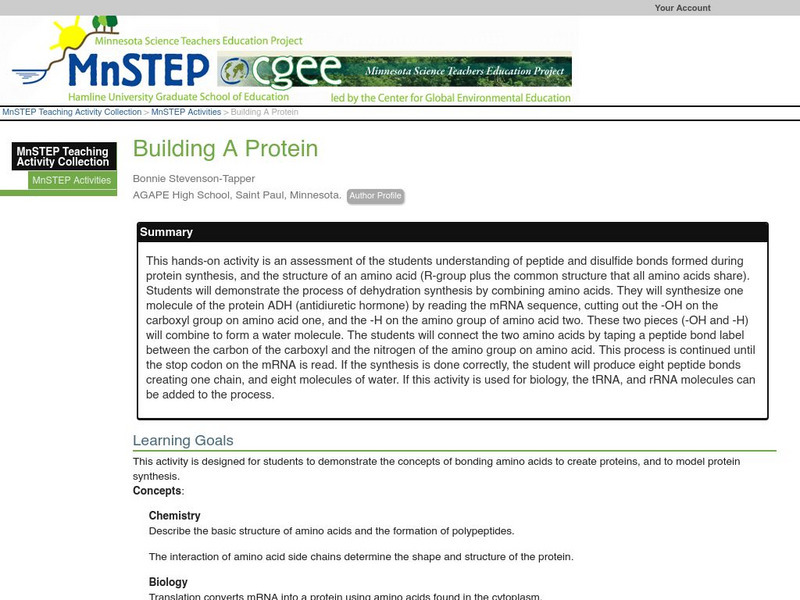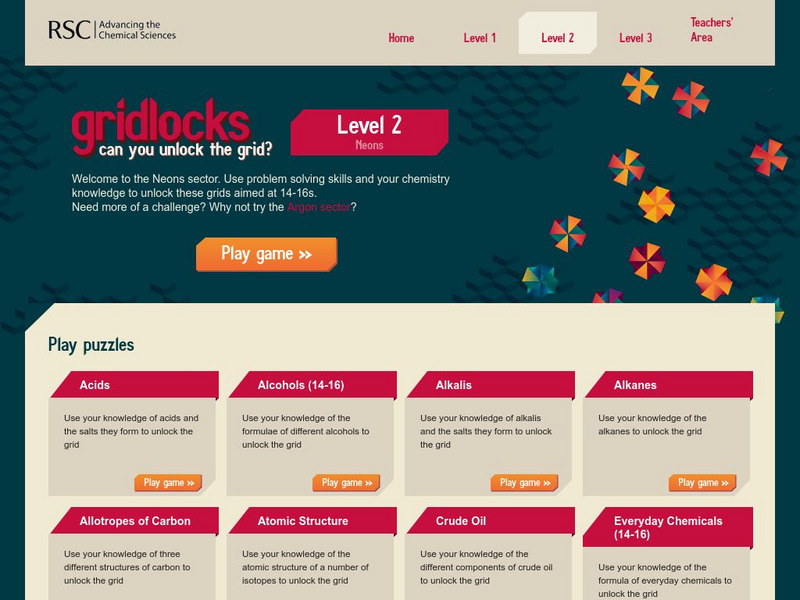Curated OER
Putting on Mass: Just how do Trees grow?
Students articulate an explanation of photosynthesis. They identify problems they have with comprehension of how a plant gains mass. Students describe a historical experiment.
Curated OER
Reading Labels For Fat Types
Students analyze a variety of cooking oils to determine the amount and types of fats included in each.
Curated OER
Micro-Magic With Sticky Ions
Students view a video about the formation of precipitates. They complete a worksheet that asks them to identify what makes a compound form and what holds it together.
Curated OER
Hurricanes Katrina and Rita: Stories To Be Told
Students listen to stories about the tradegies of Hurricane Katrina and Rita. Using their own experiences from the hurricanes, they try to put their own story into words. They are to focusing on getting the information and their feelings...
Curated OER
A TOUGH NUT TO CRACK
Based on a set of criteria, students will evaluate the quality of pecans.1. Bring a gram scale and papershell pecans. Provide five pecans for each student. 2. Divide the class into groups of five and provide each member with five pecans....
CK-12 Foundation
Ck 12: Physical Science: Carbon Bonding
[Free Registration/Login may be required to access all resource tools.] The abundance of carbon and how it forms bonds.
Chem4kids
Chem4 Kids: Carbon
Click on the left navigation terms for some great information about the 6th element in the periodic table, "carbon." Content focuses on carbon's electrons, where you can find carbon in nature and in the home, and how carbon combines with...
Wikimedia
Wikipedia: Carbon
This article from Wikipedia contains great information on the element carbon. Links are provided throughout the article to provided additional information. The topics include: Notable Characteristics, Applications, History, Allotropes,...
Vision Learning
Visionlearning: Carbon Chemistry: An Introduction
A nice introduction to why carbon is the key to organic chemistry. Explains the role of valence electrons in the bonding of carbon and gives lots of "stick figures" models of simple hydrocarbons.
BBC
Bbc: Gcse Bitesize: Covalent Bonds
A covalent bond is formed between non metal atoms, which combine together by sharing electrons. Covalent compounds have no free electrons and no ions so they don't conduct electricity.
Khan Academy
Khan Academy: Carbon and Hydrocarbons
prA webpage dedicated to information about properties and bonding patterns of carbon atoms. Page explains how carbon is essential to life.
University of California
Organic Chemistry Page: A Brief Tutorial on Drawing Lewis Dot Structures
An excellent lesson on writing Lewis structures. Examples shown include ammonium ion, carbon dioxide and the carbonate ion.
BBC
Bbc: Gcse Bitesize: Properties of Materials
This lesson focuses on the properties of carbon atoms in diamonds and graphite including their structures and bonding and their properties and uses. It also provides links to a video and an assessment.
National Institutes of Health
Ncbi: The Molecular Biology of the Cell: The Chemical Components of a Cell
Advanced chapter of the book "The Molecular Biology of the Cell" describes and provides illustrations of our most current understanding of the chemical makeup of cells and their components. Explains in detail how electron activity keeps...
OpenStax
Open Stax: Organic Compounds Essential to Human Functioning
Learn here about organic compounds, groups of carbon atoms covalently bonded to hydrogen, usually oxygen, and often other elements as well, and how they are essential to human functioning.
Davidson College
Davidson College: Network Solids: Crystalline Solids
Explains the differences between ionic, molecular, metallic, and network crystalline solids. Displays structures for diamond, graphite, fullerene, and silica, accompanied by questions about their chemical bonding. Electron density plots...
Science Education Resource Center at Carleton College
Serc: Building a Protein
This hands-on activity is an assessment of the students understanding of peptide and disulfide bonds formed during protein synthesis, and the structure of an amino acid (R-group plus the common structure that all amino acids share)....
PBS
Pbs: Scientific American Frontiers: Teaching Guide: Tasty Models (9 12)
In this hands-on lesson, young scholars use candy to construct models of nutrients (carbohydrates, proteins, and fats). Create visualizations that will aid in learning about dehydration synthesis and bond saturation in fat molecules....
McREL International
Mc Rel: Glue Polymer (Whelmer #15 Learning Activity)
An easy to do activity that investigates the basic principles behind chemical bonding. The activity is written in lesson plan format that meets NSES standards.
Other
University of Texas Dallas: Electron Appetites
The first section of this lecture on polarity and electronegativity discusses what polar covalent bonds are by using carbon dioxide as an example.
Curated OER
Simon Fraser University: Molecules and the Properties of Bonded Atoms
Drawing of a caffeine molecule. Hydrogen = white; Carbon = blue; Oxygen = red
CK-12 Foundation
Ck 12: Hydrocarbons
[Free Registration/Login may be required to access all resource tools.] In this module, students investigate and explore the bonding characteristics of carbon that lead to such a large number of organic compounds.
Royal Society of Chemistry
Royal Society of Chemistry: Gridlocks: Level 2
A collection of grid puzzles that cover a wide variety of topics in intermediate high school chemistry. These are excellent for topic review and reinforcement. The puzzles can be played online and also downloaded as worksheets. Answers...









